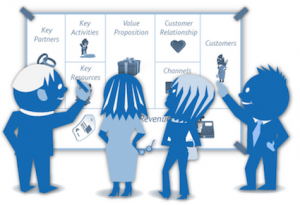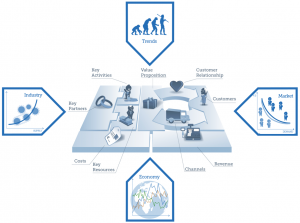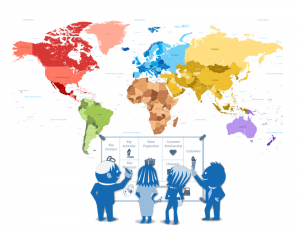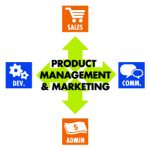Using the Business Model Environment for Export Market Assessments – Part 1
In this series of posts, I will provide a simple approach for making a fast yet fairly comprehensive assessment of a foreign market (that you have short-listed among the many opportunities available to you). This assessment will indicate which adjustments you need to make to your business model and to your go-to-market approach to become successful in that market.
It’s (almost) all under your own control
 A business model describes the rationale of how an organization creates, delivers and captures value. Using the Alexander Osterwalder business model framework[1] you will notice that all the building blocks on the canvas are within your full control.
A business model describes the rationale of how an organization creates, delivers and captures value. Using the Alexander Osterwalder business model framework[1] you will notice that all the building blocks on the canvas are within your full control.
You select your target customer segments, you design your value propositions to best serve these customer segments, you set the prices that you charge for your products and services, you choose which types of relationships you will have with your customers and you choose which channels you will use to find, nurture, mature, activate, develop, win, make, keep and grow our happy customers. We call this part of the business model “The Front Office.” Your front office activities will generate customers and revenue (which are the results of our efforts and not something that we fully control).
In the “Back Office” of our business model, you need to employ certain key resources that can execute certain key activities delivering your value propositions to our customers. The back office may build relationships with key partners and the back office generates cost.
You make all the decisions concerning how to design and run your business model yourself.
The Business Model Environment
 When you take a close look at the business model canvas you will notice the absence of some significant areas impacting your business.
When you take a close look at the business model canvas you will notice the absence of some significant areas impacting your business.
Where do you deal with the competition, the key influencers, the shortages of skilled staff, the technology trends, the availability of business partners, the changes and differences in customer needs and behavior, the demographic changes, the legal and environmental issues, the global economy, etc. etc.?
No business model lives in a vacuum and the toughest part in any business endeavor is dealing with the issues that you cannot control.
Separating the controllable from the uncontrollable
You have to make it to page 200 in Osterwalder & Pigneur’s book “Business Model Generation” before you are exposed to what they call the business model environment.
Separating what you can control, “The Business Model”, from what you cannot control, “The Business Model Environment”, is an excellent way of structuring our strategy development process when you are planning to move into foreign markets.
Moving to a new geographic market is moving to a new business model environment
 When considering moving into a new geographic market there are two basic questions that you need to clarify:
When considering moving into a new geographic market there are two basic questions that you need to clarify:
- Which differences in the business model environment in the new geography dictate changes to your business model?
- Which other portions of the business model must be modified to work effectively and scale your business in the new geography?
[1] Osterwalder, Alexander, Yves Pigneur, and Tim Clark. 2010. Business Model Generation: A handbook for visionaries, game changers, and challengers (Wiley: Hoboken, New Jersey).








